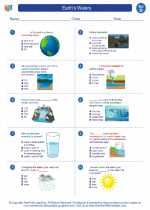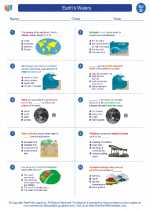Cosmic Rays
Cosmic rays are high-energy charged particles, such as protons and atomic nuclei, that originate from outer space. They travel through space at nearly the speed of light and can penetrate the Earth's atmosphere. Cosmic rays were first discovered in 1912 by physicist Victor Hess during a series of balloon flights. Since then, scientists have been studying these particles to understand their origins and effects on the Earth's atmosphere and living organisms.
Sources of Cosmic Rays
Cosmic rays are believed to originate from various astrophysical sources, including supernovae, pulsars, and active galactic nuclei. These sources accelerate charged particles to extremely high energies, which then travel through space and reach the Earth. Additionally, the Sun also emits low-energy cosmic rays known as solar cosmic rays.
Effects of Cosmic Rays
When cosmic rays interact with the Earth's atmosphere, they produce secondary particles, such as muons, electrons, and photons. These secondary particles can ionize molecules in the atmosphere, leading to the formation of ionized particles and free radicals. Furthermore, cosmic rays can also affect electronic devices and may pose a risk to astronauts and airline passengers at high altitudes.
Study Guide
- What are cosmic rays?
- Who discovered cosmic rays and when?
- What are the sources of cosmic rays?
- What are the effects of cosmic rays on the Earth's atmosphere?
- How do cosmic rays impact living organisms and electronic devices?
For further study, explore the role of cosmic rays in astrophysics, their potential impact on climate change, and ongoing research in the field of high-energy astrophysics.
.◂Science Worksheets and Study Guides Fourth Grade. Earth's Waters

 Worksheet/Answer key
Worksheet/Answer key
 Worksheet/Answer key
Worksheet/Answer key
 Worksheet/Answer key
Worksheet/Answer key
 Vocabulary/Answer key
Vocabulary/Answer key
 Vocabulary/Answer key
Vocabulary/Answer key
